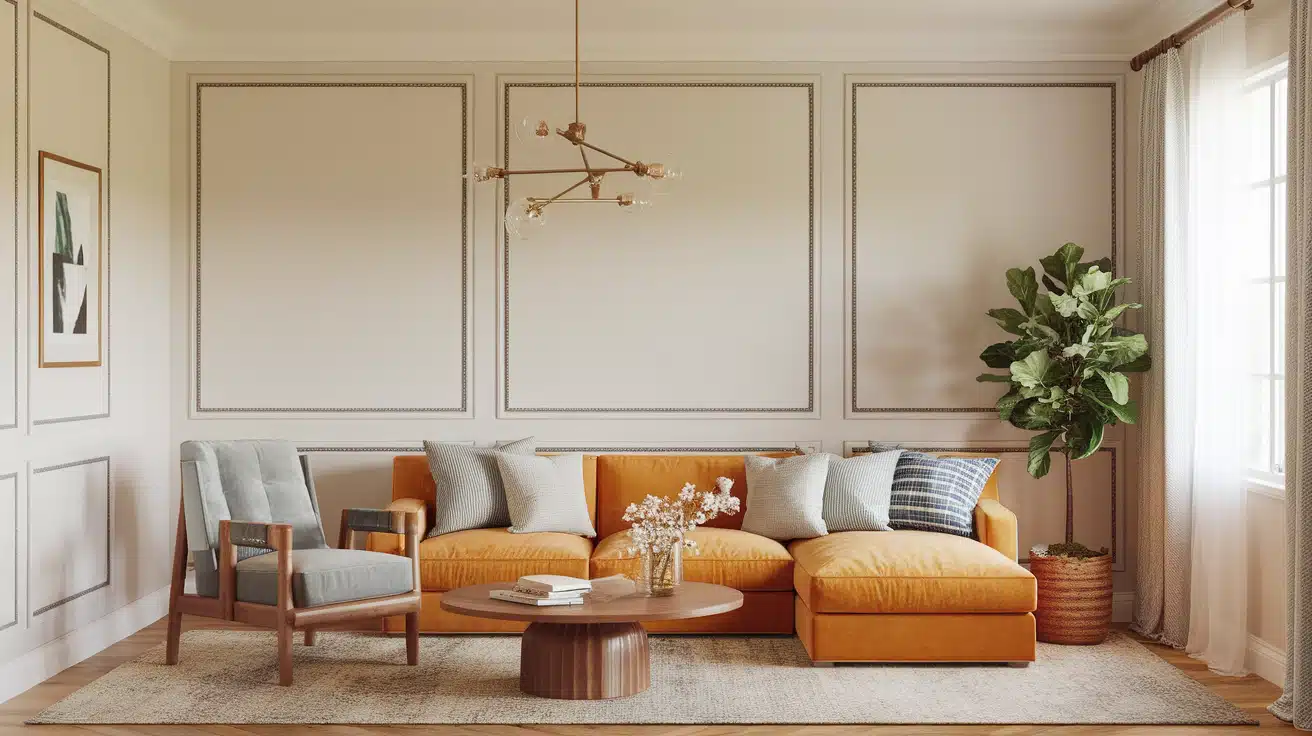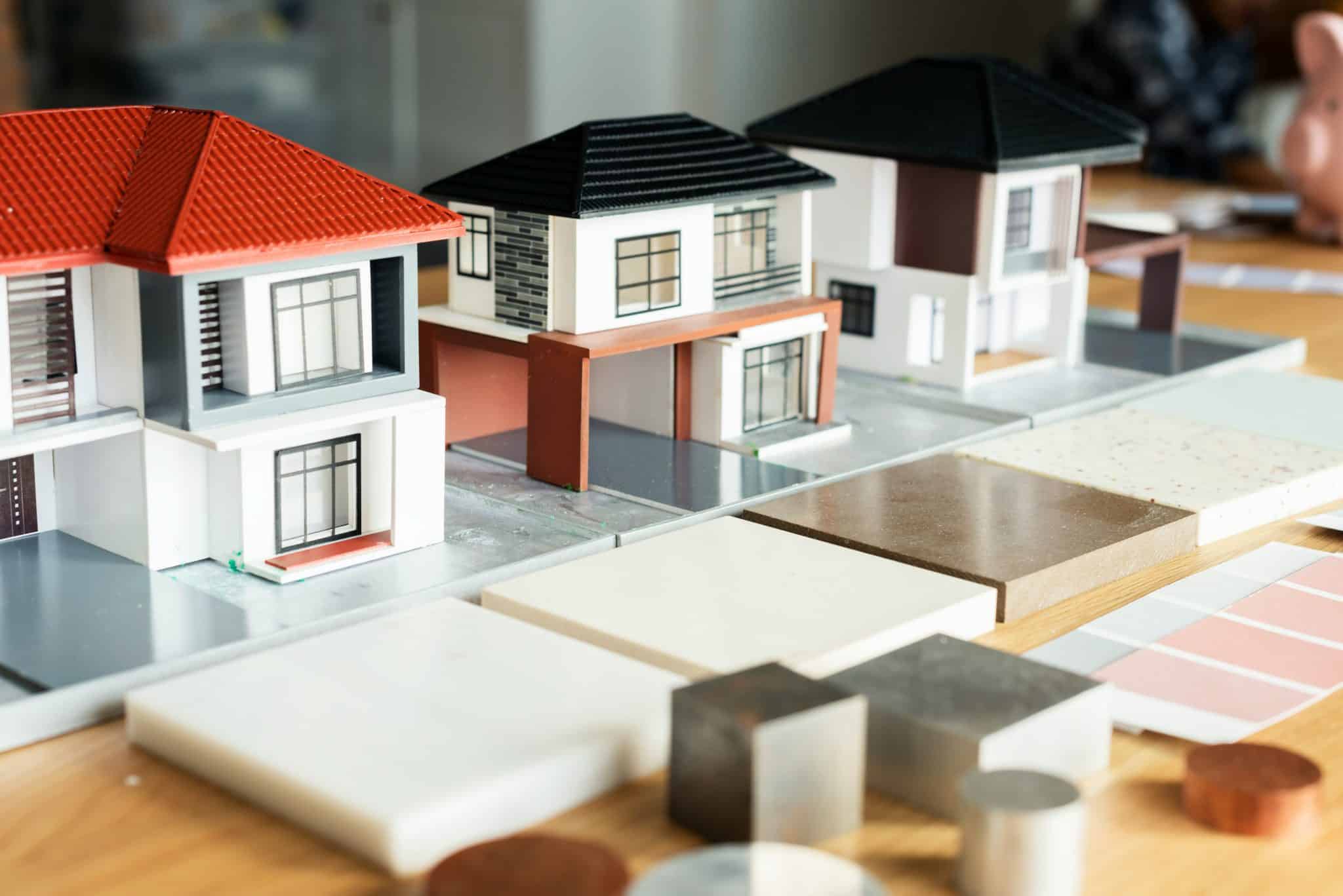Want to make your plain walls look more expensive? Box trim is your answer. This wall treatment adds depth and style to any room.
With some wood strips, tools, and patience, you can turn basic walls into a fancy feature. The process takes time but costs less than many other home updates. With the right steps, you can finish this project in a weekend.
Your guests will notice the change right away. Box trim works in living rooms, bedrooms, hallways, and even dining areas. The pattern creates visual interest that makes rooms feel bigger and more put together.
This guide will walk you through each step to create your box trim wall.
What Makes Box Trim Walls Worth It?
Box trim has become popular because it adds character without major construction. Unlike wallpaper, it has texture, and unlike paint, it has dimension. The basic materials cost much less than most wall treatments.
You can match it to your home’s style by changing the spacing and size of the boxes. The finished look fits with modern, classic, and many other design types. Adding this feature can also increase your home’s value.
Plus, you can modify and paint over it later if your style changes.
Step-by-Step Guide on Installing Box Trim
Tools and Materials Needed for Box Trim
| Category | Item |
|---|---|
| Tools | Laser level, Miter shear or saw, Brad nailer, Measuring tape, Pencil, Stud finder |
| Materials | Trim (MDF or wood), Brad nails (1¼ inch and longer), Liquid Nails adhesive, Caulk, Wood filler, Paint |
| Extras | Baby wipes (for cleanup), Painter’s tape, Sandpaper |
| Tips | Use pre-cut trim if available in the right size |
| Pro Advice | Buy 10% extra materials to allow for errors; Invest in quality tools to avoid frustration. |
Step 1: Plan Your Design and Measure
Start by measuring your wall and deciding on the pattern. Find the center point of your wall and mark it. Choose how big you want your boxes and the spacing between them.
For consistent spacing, cut small pieces of wood at your chosen gap width (like 4½ inches) to use as spacers. Draw a light sketch on paper showing the layout. Take time here to plan—this saves problems later. Consider light switches, outlets, and doors in your design.
Step 2: Prepare Your Wall
Clean your wall and fix any holes or bumps. Remove outlet covers and switch plates. Apply painter’s tape around the wall edges if needed. Find and mark all the wall studs with a pencil or small piece of tape.
This helps when securing trim pieces later. Make
sure your wall paint is in good condition, as the trim will highlight any flaws. If you plan to paint after installation, consider priming the wall first for better results.
Step 3: Cut Your Trim Pieces
Measure and cut your trim to the lengths needed for your design. You’ll need various lengths for a 12-foot wall. If using a miter saw, be careful to avoid splitting the wood. A miter shear works better for thin trim. Cut with the good side up to reduce tearing.
Label each piece as you cut it. Make 45-degree angle cuts where pieces will meet at corners. Taking the time to make clean cuts now means less fixing later.
Step 4: Find the Center and Start Installation
Mark the middle of your wall with a vertical laser line. Take your first horizontal piece, mark its center, and line this up with your wall’s center mark. Apply liquid nails to the back in several spots. Press firmly against the wall and secure with brad nails.
Keep the piece level during installation. Start from this center piece and work outward. This ensures your pattern stays centered on the wall and looks balanced.
Step 5: Add Vertical Pieces
Once your horizontal piece is secure, add the vertical pieces that connect to it. Use your laser level to keep them straight. Place your spacing blocks between pieces to maintain even gaps. Apply liquid nails to the entire back of each piece for better adhesion.
Secure with brad nails, keeping at least one inch from the edges to prevent splitting. Work from the center outward to keep the pattern even.
Step 6: Complete the Pattern
Continue adding horizontal and vertical pieces, forming boxes across your wall. Use the spacer blocks between each section. Check for level and plumb lines frequently.
When you reach outlets or switches, you can cut the trim at 45-degree angles around them or box them in completely. Near the edges of the wall or doorways, you may need to adjust box sizes slightly. The goal is to make these changes small enough that they’re not obvious.
Step 7: Secure to Studs
After all the pieces are tacked in place, use a stud finder to locate wall studs behind your trim. Where possible, add longer brad nails (1¾ or 2 inches) through the trim into the studs. This provides stronger support.
Try to get at least one nail into a stud for each piece of trim. Be careful not to nail too close to the edges of the trim, as this can cause splitting.
Step 8: Caulk and Fill Holes
Once all trim is secure, apply caulk along the edges where the trim meets the wall. This creates a seamless look. Fill all nail holes with wood filler. Wipe excess caulk with a baby wipe before it dries.
Allow everything to dry completely according to the product instructions. Lightly sand the filled nail holes until smooth. Clean the wall and trim to remove any dust or fingerprints before painting.
Video Tutorial
Check out this YouTube video for a detailed step-by-step Tutorial on Box Trim on Walls.
Best Paint Finishes for Box Trim Walls
The way you paint your box trim can completely change its impact. You have several options, each creating a different look for your room.
Monochromatic Finish
Painting the boxes, the inside wall, and the surrounding wall the same color creates a subtle, textural effect. This choice works well in small rooms since it adds interest without making the space feel smaller.
Using the same color but choosing a higher sheen (like satin or semi-gloss) for the trim makes the pattern visible without a strong contrast. This option fits well with clean, modern styles and makes the room feel bigger and more open.
Contrast Approach
Painting the trim a different color than the wall makes the boxes stand out prominently. White trim on a colored wall is a classic choice that works in most homes. This option draws more attention to your wall pattern and acts as a stronger focal point.
The higher the contrast, the more the trim will grab attention. This style fits well with traditional and formal spaces.
Two-Tone Method
Painting the wall inside the boxes a different color or shade than the surrounding wall adds another layer of depth. This creates a picture-frame effect that can showcase the inside spaces.
You might paint the trim white, the outer wall a medium gray, and the box interiors a lighter gray. This approach lets you play with color while keeping the look tied together.
Box Trim Wall Errors That Can Ruin the Look
| Mistakes to Avoid | Why It’s a Problem | Better Approach |
|---|---|---|
| Skipping the planning stage | Creates uneven spacing and poor layout | Measure twice, draw a plan, mark center points |
| Using too few nails | Trim may pull away from the wall over time | Use both adhesive and nails, and secure to studs when possible |
| Rushing the caulking | Leaves messy edges and gaps | Apply carefully, wipe excess while wet |
| Ignoring wall prep | Highlights existing wall flaws | Clean and repair the wall surface before starting |
| Not accounting for outlets | Creates awkward trim cuts | Include outlets in your initial planning |
| Using the wrong adhesive | May fail to bond properly | Use construction-grade adhesive made for trim |
| Insufficient spacing | Makes the pattern look crowded | Maintain consistent gaps (4-5 inches works well) |
| Painting before caulking | Caulk won’t adhere properly to paint | Install, caulk, then paint for best results |
Conclusion
Box trim transforms plain walls into statement features without major construction. The project requires planning, patience, and attention to detail, but the results speak for themselves. When you finish, your walls will look custom-made and expensive.
This update works in almost any room and with various decorating styles. The supplies cost much less than many other home projects, making it a smart choice for budget-focused makeovers.
Your new box trim walls will create a lasting impression on visitors and add value to your home. With proper care, this update will last for years, creating a base for other design changes as your style grows.
Looking at your finished walls, you’ll feel the satisfaction of a job well done.
Frequently Asked Questions
1. How Long Does It Take to Complete a Box Trim Wall?
Most people can finish one wall in a weekend, with drying time included.
2. What Is the Average Cost for a 10×10 Foot Wall?
Materials for a standard wall typically run between $100 and $ 200, depending on trim quality.
3. Can Box Trim Be Installed on Textured Walls?
Yes, but you may need to smooth the wall or use thicker trim to hide texture issues.
4. Do I Need to Remove the Box Trim if I Want to Change My Wall Later?
No, you can paint over it or add to the design without removal in most cases.
















